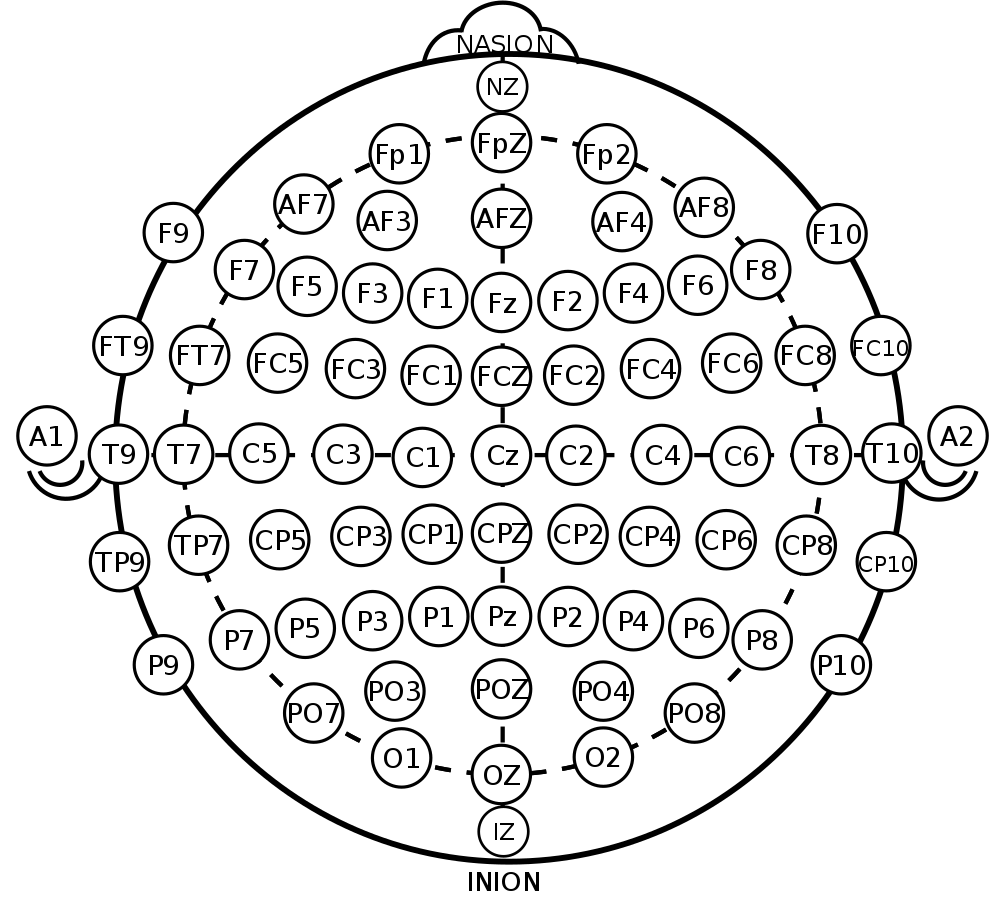As per the convention of the international 10-20 system, each electrode is named by either a letter and a number, or two letters. The first letter represents the area of its placement in relation to the brain: F = frontal lobe, T = temporal lobe, P = parietal lobe and O = occipital lobe. Odd numbers relate to the left side of the head, while even numbers indicate the placement on the right side. Electrodes placed down the center of the head are not numbered but are instead paired with a ‘z’ for zero. Other sites including the ears and mastoid region begin with an ‘a’ followed by a number indicating which side of the head it was placed using the odd and even number schema (St. Louis & Frey, 2016). Derived channels can help indicate where eye blinks and vertical eye movement occurs. Some researchers use two electrodes assigned to blinks, and two which record vertical eye movement (Acheson, 2019), while others may use one electrode for each type of eye movement.

International 10-20 system for EEG electrode placement.